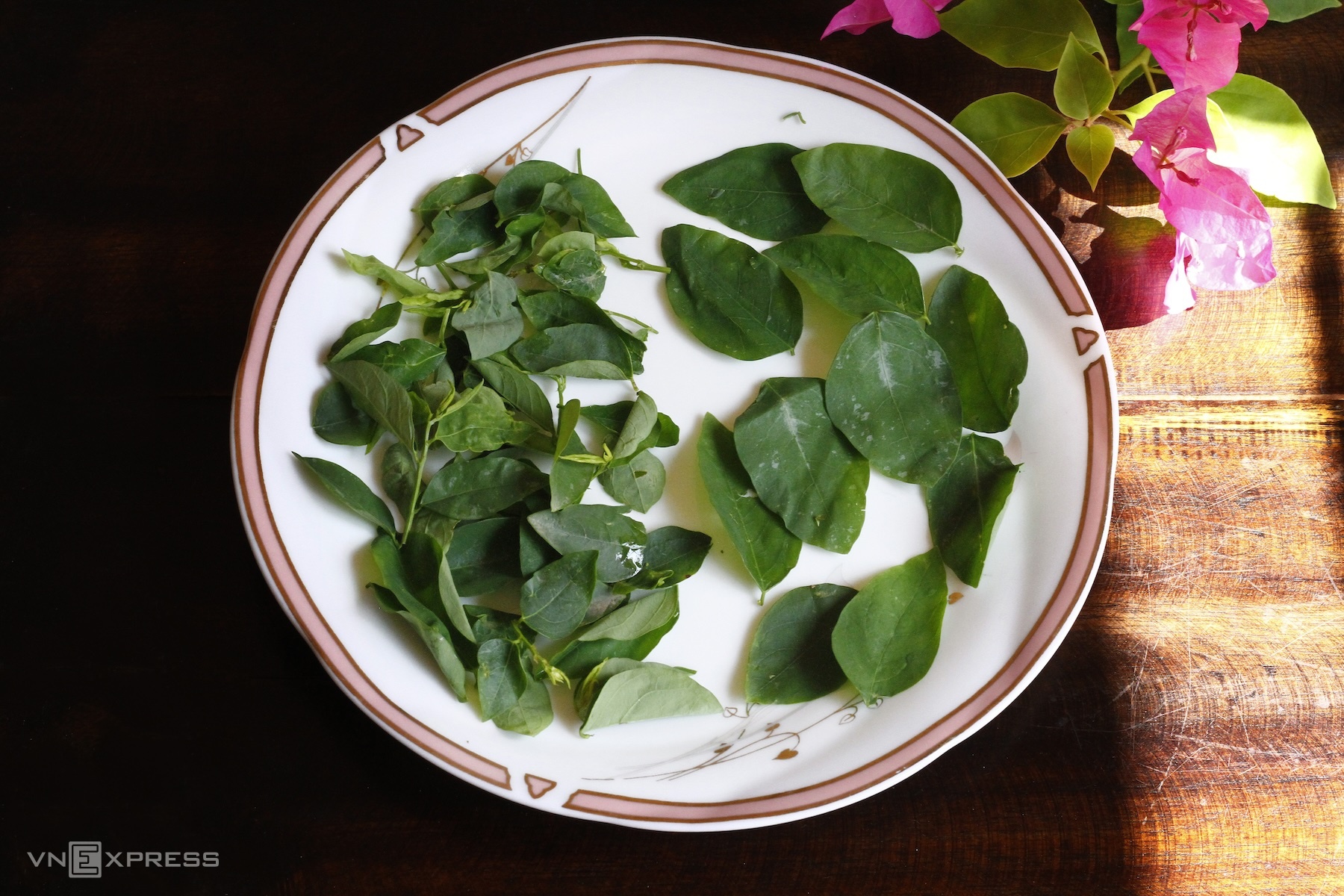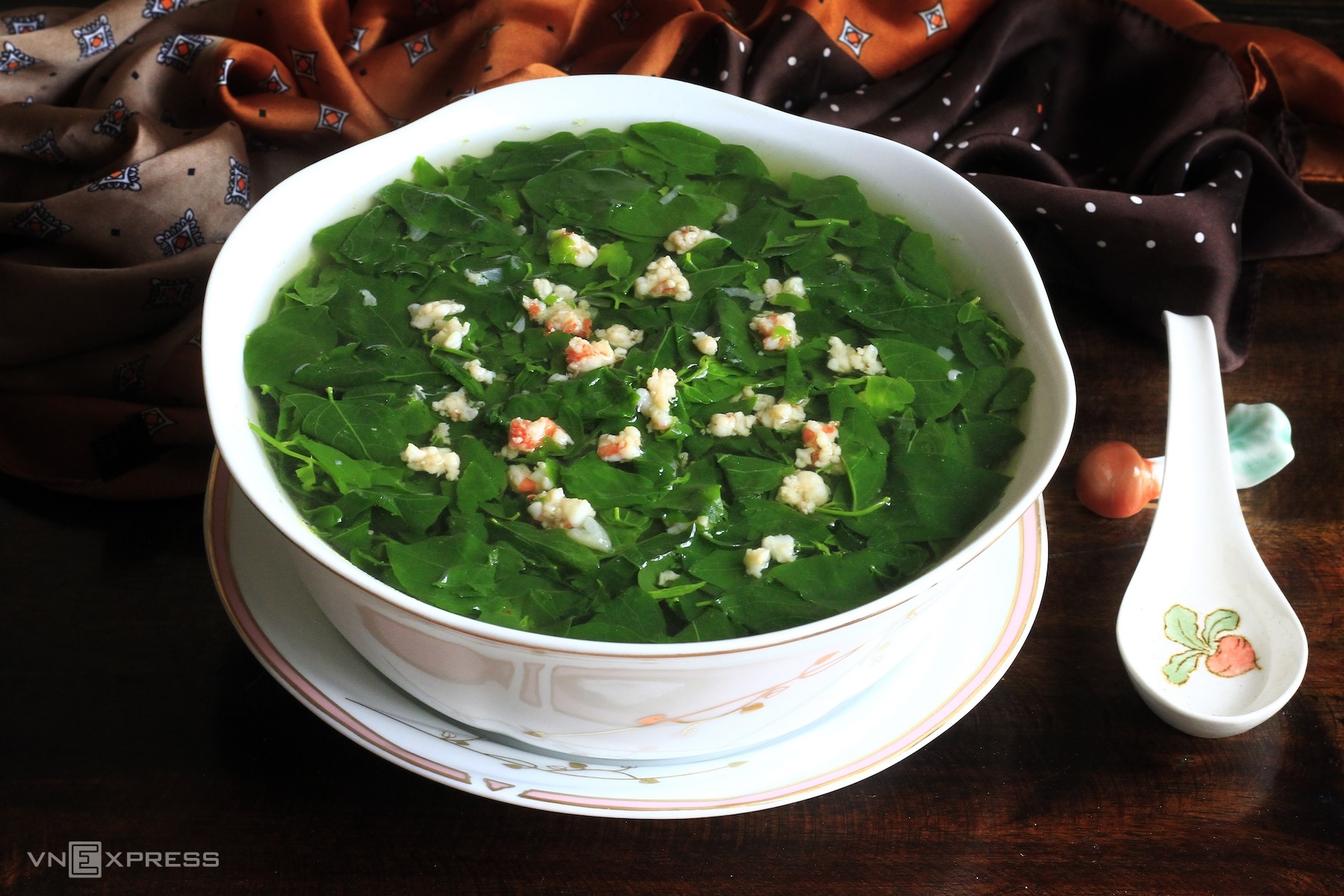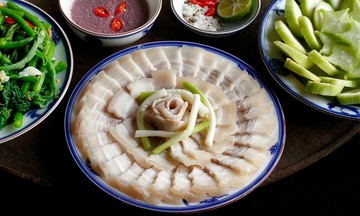Choosing and crushing jute leaves
Experienced cooks often choose jute leaves that are small, thick, and have a characteristic aroma. This type, when cooked, has a clear taste and isn't tough, even without crushing. Many hybrid jute varieties today have large, thin leaves. Skipping the crushing step can make the leaves slippery and tough to eat.
Crushing the leaves lightly is a secret to rupturing the cell walls, allowing the juices to be released more easily. This speeds up the release of natural sugars and amino acids when heated, reducing toughness.
However, do not crush the leaves too thoroughly, as the vitamin C in jute is sensitive to oxygen and friction and can be lost. Moreover, over-crushing can make the leaves too pulpy, resulting in a cloudy soup that lacks the clarity considered a mark of a well-made dish.
 |
Small, thick jute leaves make for a tastier soup. Photo: Bui Thuy |
Small, thick jute leaves make for a tastier soup. Photo: Bui Thuy
Should jute leaves be sauteed?
Jute leaves can be combined with various ingredients to create delicious soups, such as lean meat, minced shrimp, crab, pork bone broth, or chicken broth.
A common debate is whether to saute the leaves first or cook them directly. Many people saute the leaves: they fry pork fat with shallots until fragrant, add minced shrimp or meat, stir-fry until cooked, then add the jute leaves for a quick saute before pouring in hot water. This method enhances the flavor, as the melted pork fat blends with the shallot oil, creating a fragrant coating on the leaves. Adding water then releases the sweetness, resulting in a more flavorful soup.
Conversely, some prefer direct cooking: adding the leaves to boiling water along with minced meat, preserving a natural, less fatty taste. The choice depends on individual family preferences.
Seasoning
The seasoning for jute leaf soup also reflects regional habits. Some families only add a little sea salt to maintain the pure flavor, while others add fish sauce for a richer aroma. All follow the yin and yang principle in cuisine: jute leaves are cooling, sweet, and yin; combined with warm, fatty, and yang pork fat, they create balance in a meal. There's no need for elaborate modern seasonings like flavor enhancers, as jute leaves are naturally sweet.
 |
"Proper" jute leaf soup retains the green color of the leaves and a clear broth after cooking. Photo: Bui Thuy |
"Proper" jute leaf soup retains the green color of the leaves and a clear broth after cooking. Photo: Bui Thuy
Heat control
The most crucial aspect of cooking jute leaf soup lies in heat control. Jute leaves cook quickly, so they are usually added to boiling water and only need to be brought back to a boil briefly to soften and create a clear broth.
Overcooking can discolor the leaves, cloud the broth, and diminish the fresh flavor. Scientifically, jute leaves are rich in vitamin C and chlorophyll. Vitamin C is heat-sensitive, significantly degrading above 70°C. Chlorophyll, when exposed to the slightly acidic environment produced during cooking and high temperatures, transforms into pheophytin, a compound that causes dulling and makes the soup less appealing. Furthermore, overcooking alters some natural organic acids, giving the broth an unpleasant taste.
A successful pot of jute leaf soup has tender, green leaves, and a sweet, clear, and refreshing broth. This is why traditional wisdom recommends consuming jute leaf soup immediately and not reheating it.
Bui Thuy












